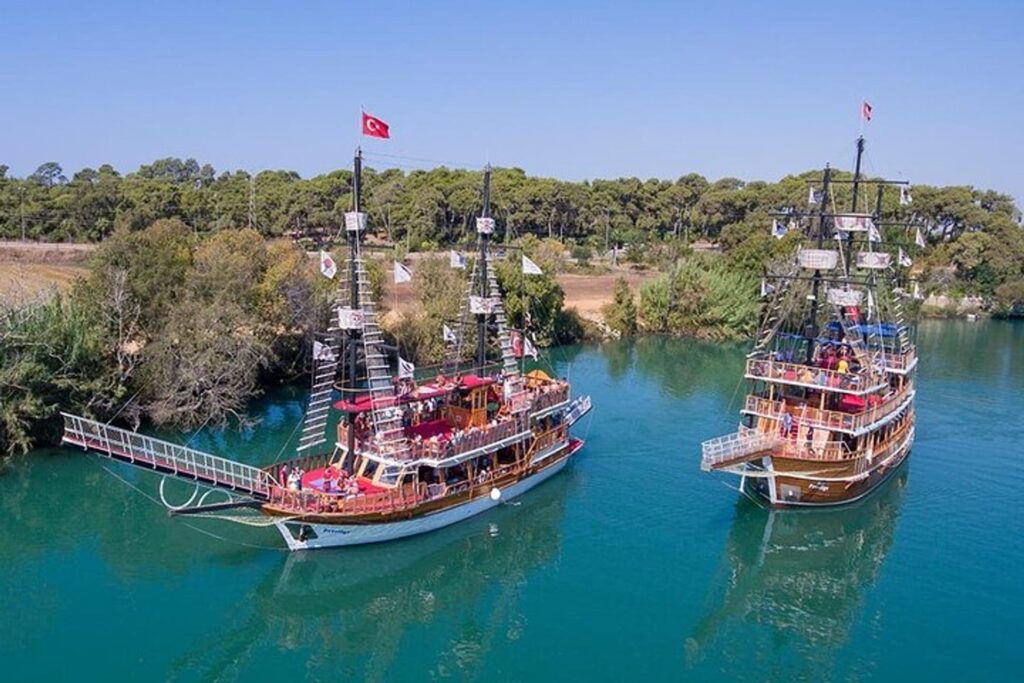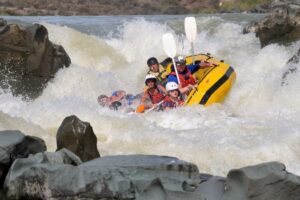Gambela’s Baro River – Water Adventure Awaits
Nestled in the lush landscapes of western Ethiopia, the Baro River in Gambela offers a unique blend of natural beauty and thrilling water adventures. This river, a vital part of the Nile Basin, is not just a geographical feature but a lifeline for the communities and wildlife that thrive along its banks. Whether you’re an adventure seeker or a nature lover, the Baro River promises an unforgettable experience.
What to See and Do
The Baro River is a haven for those who love water-based activities. Kayaking and canoeing are popular here, offering a chance to navigate the river’s gentle currents while soaking in the stunning scenery. The riverbanks are lined with dense forests, home to a variety of wildlife, including hippos and crocodiles, which can often be spotted from a safe distance. Birdwatchers will be delighted by the diverse avian species that inhabit the area, making it a perfect spot for photography enthusiasts.
For those who prefer a more relaxed experience, a boat tour along the Baro River is a must. These tours provide a serene way to explore the river, with knowledgeable guides sharing insights about the local ecosystem and the cultural significance of the river to the indigenous communities. Fishing is another popular activity, with the river teeming with various fish species, offering both a challenge and a reward for anglers.
A Bit of History and Interesting Facts
The Baro River has long been a crucial part of the region’s history. It serves as a major tributary of the White Nile and has been a vital waterway for trade and transportation for centuries. The river’s name is derived from the local Anuak language, reflecting the deep cultural ties the indigenous people have with this waterway.
One interesting fact about the Baro River is its role in the annual flooding cycle, which enriches the surrounding soil, making it fertile for agriculture. This natural phenomenon has supported the livelihoods of local communities for generations, allowing them to cultivate crops and sustain their way of life.
The river is also part of the Gambela National Park, a protected area that boasts a rich biodiversity. The park is home to several endangered species, and conservation efforts are ongoing to preserve this unique ecosystem.
Getting There and Tips for First-Time Visitors
Reaching the Baro River is relatively straightforward. The nearest major city is Gambela, which is accessible by both road and air. Gambela Airport offers regular flights from Addis Ababa, the capital of Ethiopia. From Gambela, the river is just a short drive away, and local tour operators can arrange transportation and guided tours.
For first-time visitors, it’s important to plan your trip during the dry season, which runs from October to March. During this time, the weather is more predictable, and the river conditions are ideal for water activities. It’s advisable to bring insect repellent, sunscreen, and comfortable clothing suitable for both warm days and cooler evenings.
Engaging with local guides can enhance your experience, as they offer valuable insights into the region’s culture and natural history. Respect for local customs and traditions is appreciated, and learning a few basic phrases in the local language can go a long way in building rapport with the community.








